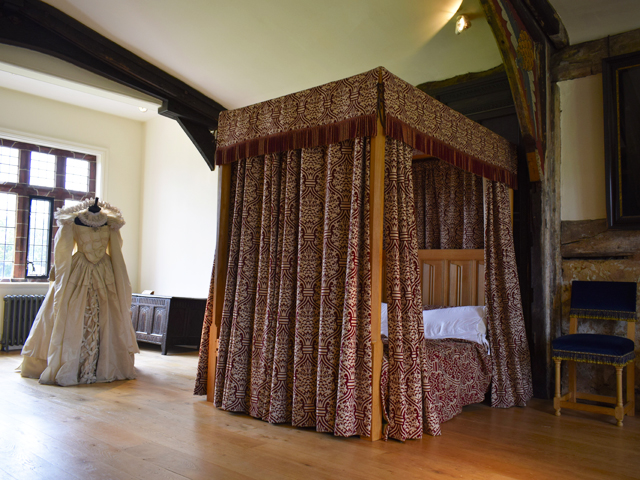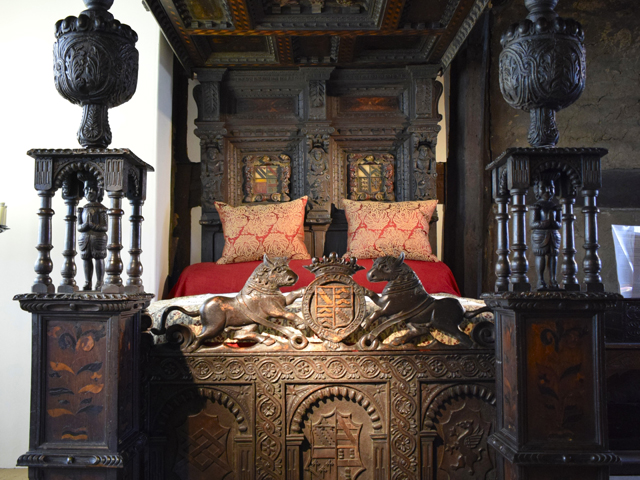
Our research
This project will be the first to define and analyse sleep habits as historically-situated environmental practices.
It investigates how and why communities in Britain, Ireland and England’s emerging American colonies c.1500-1750 engaged with their physical surroundings in an effort to sleep well and safeguard their health.
The project will uncover an environmentally informed culture of ‘sleep care’, its conceptual underpinnings, and its manifestation in a range of everyday ‘sleep care’ practices from the preparation of soporific tonics to the composition of bedding materials. As such, it will demonstrate that ‘sleeping well’ involved much more than simply avoiding sleep disorders or coping with sleep loss.
Environing
The project’s methodological innovation lies in its application of the concept of ‘environing’ to sleep care practices. Environments have complex ecologies and histories that are forged through interactions with their inhabitants. These interactions are conceptualised in this project as ‘environing’ practices whose recovery is central to this enquiry (Sörlin & Warde).
Recovering environing practices highlights the active engagement of early modern communities with their surroundings, and permits an assessment of how these practices were distinguished by the ecological profiles of particular localities. This approach recognises the critical importance of place to sleep’s fortunes that is recognised across multiple fields.
Circadian rhythm research makes clear that optimal sleep depends on synchronizing internal biological processes with external physical environments. Researchers have documented the incidence of sleep and circadian rhythm disruption (SCRD) as human biological needs conflict with the environmental conditions (and demands) of industrialised ’24/7′ societies (Roenneberg; Kreitzmann).
Some have declared a ‘sleep crisis’ because of the apparent rupture between environmental factors and circadian biology (Stevenson; Walker) and others cite ‘sleep’s growing disconnection from natural systems’ as one cause of its deteriorating quantity and quality in the modern world (Reiss).
Sleep ‘care’
This project interrogates this ‘rupture’ thesis by recovering a longer, more complex, and more positive history of the sleep-environment nexus that shifts focus away from sleep ‘crisis’ and sleep disorders to environmentally-informed cultures and practices of sleep ‘care’.
In so doing it will challenge the assumed primacy of modern environmental change in transforming human sleep fortunes by assessing the implications of early modern environmental relations and changes, for the first time.
Characterisations of ‘preindustrial’ sleep habits as homogenous products of harmonious relations between humans and ‘nature’ will also be overturned by examining how a variety of sleep care practices were afforded by select localities in this timeframe.
How and why early modern communities engaged with their surroundings to optimise sleep, and how they adapted their sleep care practices to cope with environmental change, are highly pertinent to current debates about sleep’s management.
Publications
Leah Astbury: 'Eat, Sleep, Lust, Repeat: Bedtime Routine, Health and Herbals in Early Modern England'
Dr Leah Astbury has published an open access article exploring research from the project on how routines around sleep, sex, eating and drinking were deployed as domestic practices with medical, moral and social importance.
Read more here.
Holly Fletcher: 'Making beds in early modern England: sleep, matter and environmental change'
Dr Holly Fletcher has published an open access article arguing that sleep management in early modern England involved environmental practices in which bodies and matter were interwoven. She transforms our view of the sleeping conditions of the early modern poor and demonstrates the significance of place-specific, material knowledge for health care practices.
Read more here.
Interviews and media
Prof Sasha Handley was interviewed by Katie Hunt for a recent CNN article about the contemporary relevance of sleep’s history.
She was also included in this article by Zaria Gorvett on the lost practice of communal bed sharing for the BBC.
Dr Holly Fletcher recently spoke about ‘how people’s physical surroundings shaped their efforts to get a good night’s sleep in the early modern period’ for the digital storytelling project The Thinker’s Garden.
Prof Sasha Handley was featured in this BBC Radio 3 discussion on historical sleep research and thinking about sleep patterns, discussing early modern sleep habits and what we could learn from them today.
More about our research
Research questions
Research questions that are central to this project include (but are not limited to):
- How did people understand the relationship between ‘place’ and sleep quality c.1500-1750?
- How did the diverse ecologies of Britain, Ireland, Virginia and Newfoundland shape the materials and practices of sleep care?
- How were practices of sleep care impacted by environmental change c.1500-1750?
- How did changes in medical, botanical and natural philosophical knowledge shape approaches to sleep care c.1500-1750?
- How did economic, social, age, gender and race hierarchies impact the practice and receipt of sleep care?
Work packages
The project is organised into the following four work packages:
- Latitudes of sleep: Which climatological, meteorological and topographical factors were judged to affect sleep quality? What material strategies did people deploy to control the photic and thermal conditions of their sleep environments at different times of year?
- Sleep dietetics: What foodstuffs were consumed and prepared to support healthy sleep in different localities? How did shifts in dietetic advice and physiological knowledge affect sleep care practices? Who were the chief agents of soporific food sourcing and preparation?
- Plant cultivation and botanical soporifics: Which botanical materials were used to support healthy sleep in a period of rapid environmental change? How far did new botanical knowledge and changing views of sleep physiology influence the use/composition of botanical soporifics? Who were the chief agents of soporific plant cultivation, preparation and application?
- Multispecies sleep: How did the labour demands of agricultural work direct human sleep timings and spaces? How far did interactions with domestic animals, livestock, and wild animals in different localities direct the sensory dimensions of human sleep? In what ways did animal produce regulate sleep’s material environments?




